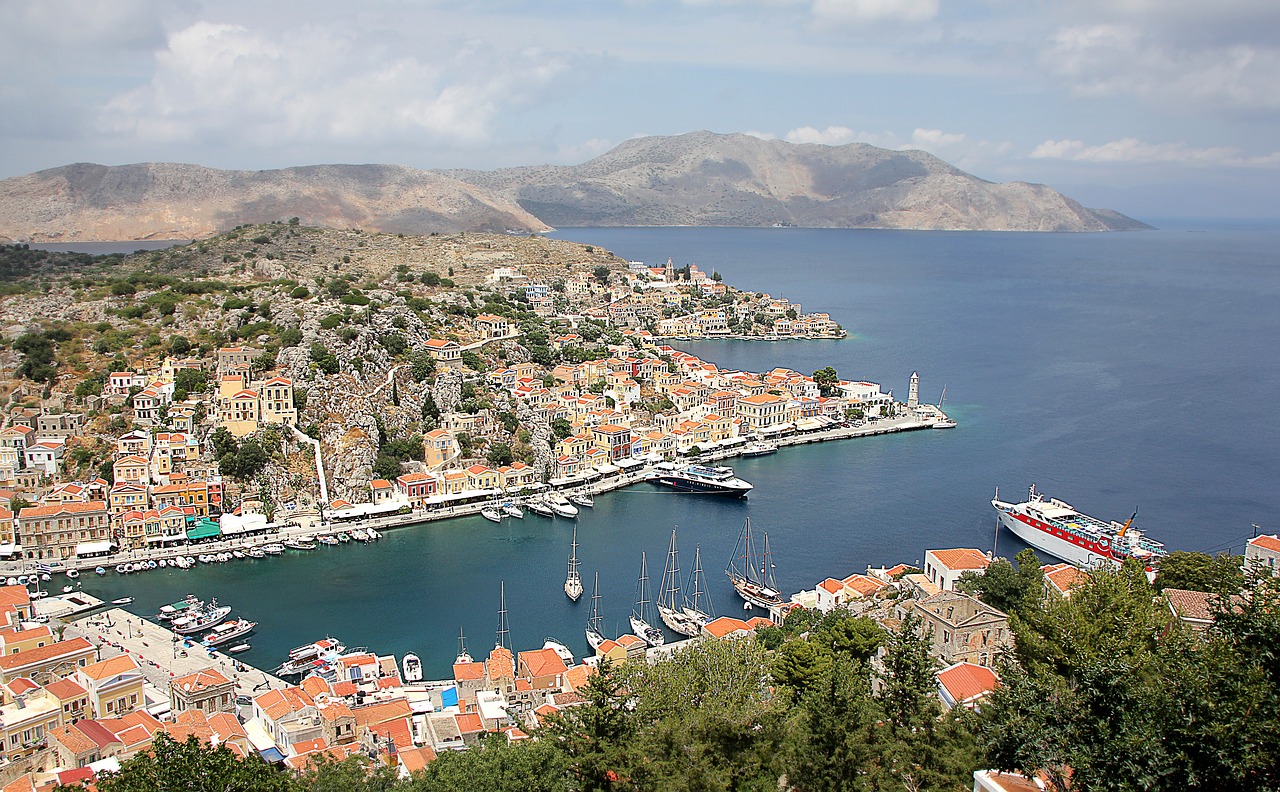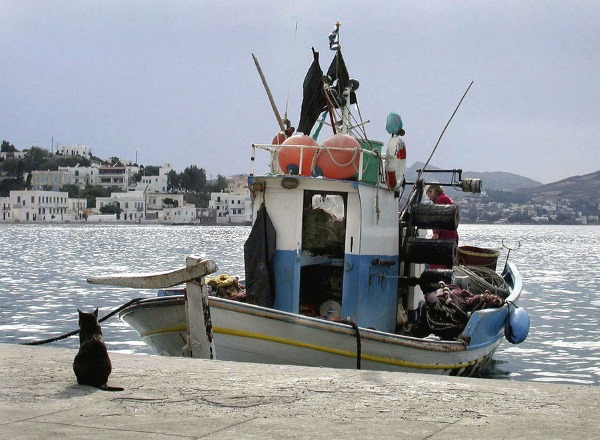- HOME
- Dodecanese
- Kos
- Best Time to Visit Kos
Best Time to Visit Kos
Greece Travel Secrets picks the best time to visit Kos, with a monthly summary of the weather, plus hotel prices and special events to help plan a visit.
When considering the best time to visit Kos, you'll want to take into account a variety of factors. Kos, one of Greece's most popular Dodecanese islands, boasts a charming Mediterranean climate characterized by hot, dry summers and mild, wet winters.
The diversity of Kos's climate ensures something for everyone across the year, whether you prefer sun-soaked beach vacations or cooler explorations of historical sites. But let's delve into the specifics to provide you with the best suggestions.
Best Month to Visit Kos
January in Kos is a mild winter, often sunny but with the expected chill in the air. Average temperatures hover around 56°F (13°C) during the day, dropping to 47°F (8.5°C) at night. The rainfall is significant, around 5.6 inches (143 millimetres). Kos rarely gets snow. January is considered low season with fewer tourists, thus resulting in lower hotel prices.
When we move into February, the weather remains fairly similar to January. Average day temperatures sit comfortably at 57°F (14°C) and fall to 47°F (8.5°C) at night. Rainfall sees a slight decrease to around 4.3 inches (110 millimetres). Again, February is ideal for enjoying off-peak hotel pricing, as there are typically no major events happening.
March begins to show a few signs of the impending spring. Daytime average temperatures increase to around 61°F (16°C) and fall to 49°F (9.5°C) after sunset. Rainfall continues to drop as we see averages around 3.2 inches (80 millimetres). The island begins to come to life with the local Almond Blossom Festival, bringing an authentic Greek experience with lower hotel rates.
April truly welcomes the spring, with averages up to 66°F (19°C) during the day and 54°F (12°C) at night. Kos gets much drier in April, with only 1.6 inches (41 millimetres) of rain. Easter celebrations usually fall in April and dominate the island, with moderate hotel prices.
May starts the beginning of the peak season. Expect to find warmer average temperatures of around 76°F (24°C) in the day, cooling to 63°F (17°C) at night. The rainfall drops to a mere 0.8 inches (20 millimetres), and hotel prices start to climb. Many visitors time their holidays with the Kos Island Horse Races.
June delivers the full glory of the Mediterranean summer with highs of about 84°F (29°C), dipping to around 70°F (21°C) at night. There’s a minimal 0.2 inches (5 millimetres) rainfall. The Kos summer events start taking place, with hotel prices at their peak.

Those unfazed by the heat may find July to be the best time to visit Kos. With temperatures hitting an average high of 88°F (31°C) and nights at 73°F (23°C), this is prime beach weather. Rain is virtually non-existent in July. Remember that hotel prices remain at the height of their range.
August keeps the July's weather pattern stable, with hot days averaging about 88°F (31°C) and nights at 73°F (23°C). You can expect no significant rainfall in August. Kos's annual Wine Festival attracts oenophiles this month. Keep in mind that hotel prices remain high.
September starts to mellow out the summer heat with daily averages down slightly to 82°F (28°C) and night temperatures around 68°F (20°C). Rainfall remains low at 0.3 inches (8 millimetres). Hotel prices start to reduce as the tourist crowd thins, making this a great time to experience the Olive Oil Festival celebrated in the local villages.
October brings in the autumn weather. However, it's still pretty warm, with average daily temperatures about 73°F (23°C) and nights cooling to 61°F (16°C). There's a slight increase in rainfall to 1.9 inches (48 millimetres). Hotel prices continue to fall, making it an economical choice.
November experiences a further drop in temperatures with 66°F (19°C) during the day and 54°F (12°C) at night. Rainfall levels increase to 3.5 inches (90 millimetres). There are fewer crowds around this time, leading to even lower hotel prices. This is a quiet month, with no notable events.
December carries the tranquillity of November into the holiday season. Temperatures range from an average of 59°F (15°C) during the day to 50°F (10°C) at night. Rainfall peaks at around 5.9 inches (150 millimetres). Hotels offer competitive prices to make for a delightful and affordable holiday escape.
Best Time to Visit Kos
From our month-by-month breakdown, it’s clear that the best time to visit Kos is subjective and depends on what kind of holiday you're after. For those who fancy the beach, consider the warm months of June through August.
However, if you prefer a cultural experience full of authentic Greek events, then visit during spring (March to May) or autumn (September to November). And, for the best deals at hotels, travelling during the winter months might be worth braving the colder Kos weather and heavier rainfall.
There’s no 'one size fits all' when it comes to identifying the best time to visit Kos. The island's vibrant festivals, historical highlights, and stunning coastlines have something to offer to all sorts of travellers year-round.
Latest Posts
-
The Lesser-Known Traditions of Greek Easter
Step off the beaten path this spring and discover the enchanting — and often surprising — Easter traditions found across Greece. -
Easter in the Mystical Castle of Monemvasia
In the castle town of Monemvasia, with its dramatic medieval backdrop and sea views, Easter is a deeply spiritual and atmospheric experience. -
Sifnos: Greece’s Hidden Culinary Star on the Rise
Sifnos, a Cycladic island, is gaining fame for its rich culinary heritage, especially the beloved melopita honey-cheese tart. -
Easter in Leonidio: A Tapestry of Light, Culture and Cliffs
In Leonidio, Easter comes alive with handmade hot air balloons in the sky and lanterns made from bitter oranges in the streets. -
April 9 Strike in Greece to Impact Public Transport, Ferries and Air Travel
Transportation and travel across Greece will face disruptions on Wednesday, April 9, as public transport, ferry and aviation workers join a nationwide strike called by Greek labor unions. -
Ancient Theater of Lefkada Brought Fully to Light Following Systematic Excavation
The Greek Culture Ministry has announced that the first ancient theater ever identified in the Ionian Islands has recently been brought fully to light on Lefkada, revealing an impressive monument that… -
Seven Greek Traditions Recognized as Intangible Cultural Heritage
From traditional barrel-making to age-old folk dances, seven new entries on Greece’s National Inventory preserve the country’s living heritage for future generations. -
Greek Air Traffic Controllers to Hold 24-hour Strike, Disrupting Flights on April 9
The Hellenic Air Traffic Controllers Union have announced a 24-hour strike for Wednesday, April 9, in response to the protest called by the Civil Servants’ Confederation (ADEDY). The strike is being h… -
Ten Best Budget Hotels on Santorini
Greece Travel Secrets picks the ten best budget hotels on Santorini, some with caldera views, some near beaches and some close to the heart of Fira. -
No Ferries in Greece on April 9 as Seamen Join Nationwide Strike
The Pan-Hellenic Seamen’s Federation (PNO) has announced its participation in the 24-hour strike called by the General Confederation of Greek Labor (GSEE) on Wednesday, April 9. The strike, which will…
























